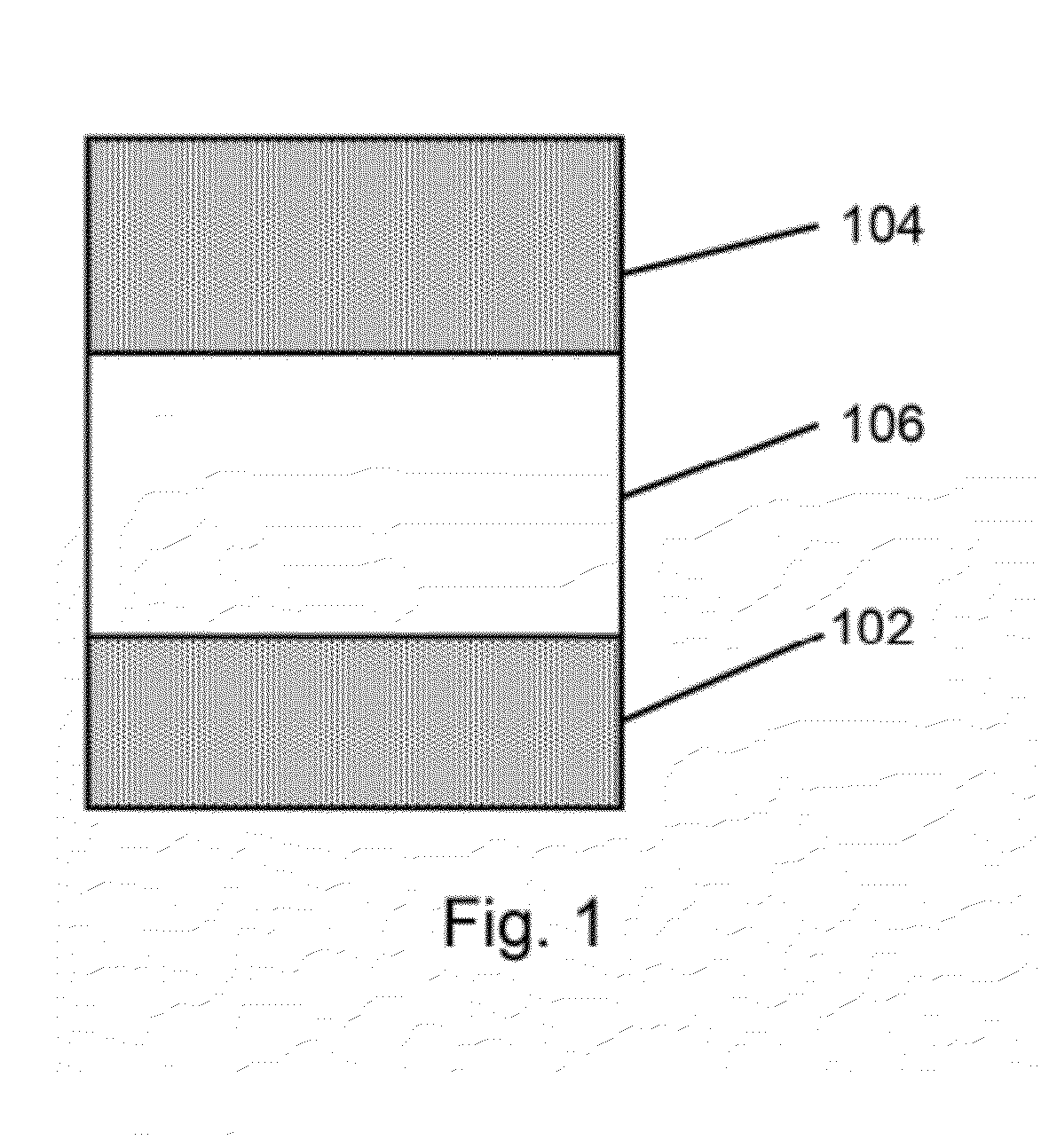Integration of an amorphous silicon resistive switching device
a resistive switching and amorphous silicon technology, applied in the direction of semiconductor devices, basic electric elements, electrical apparatus, etc., can solve the problems of increasing power dissipation, non-scaling of sub-threshold slopes, and reducing device performan
- Summary
- Abstract
- Description
- Claims
- Application Information
AI Technical Summary
Benefits of technology
Problems solved by technology
Method used
Image
Examples
Embodiment Construction
[0022]The present invention is generally related to resistive switching devices. More particularly, embodiments according to the present invention provide a method and a structure for integrating a resistive switching device with a transistor for switching control. The present invention can be applied to non-volatile resistive switching memory device. But it should be recognized that the present invention can have a much broader range of applicability.
[0023]FIG. 1 is a simplified diagram illustrating a resistive switching device according to an embodiment of the present invention. As shown, the resistive switching device includes a first electrode 102, a second electrode 104, and a switching material 106 sandwiched between the top electrode and the bottom electrode. The switching material is configured to change in resistance when a voltage is applied to the first electrode or the second electrode. The first electrode and the bottom electrode can include one or more conductive mater...
PUM
 Login to View More
Login to View More Abstract
Description
Claims
Application Information
 Login to View More
Login to View More - R&D
- Intellectual Property
- Life Sciences
- Materials
- Tech Scout
- Unparalleled Data Quality
- Higher Quality Content
- 60% Fewer Hallucinations
Browse by: Latest US Patents, China's latest patents, Technical Efficacy Thesaurus, Application Domain, Technology Topic, Popular Technical Reports.
© 2025 PatSnap. All rights reserved.Legal|Privacy policy|Modern Slavery Act Transparency Statement|Sitemap|About US| Contact US: help@patsnap.com



